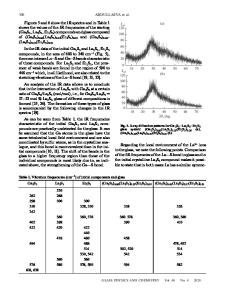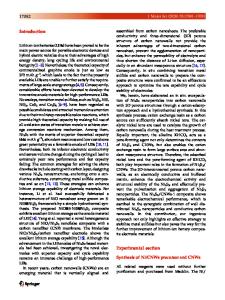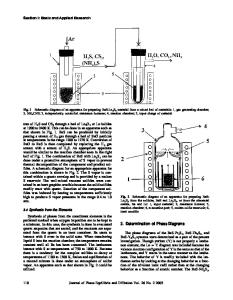The vaporization kinetics of Ni 3 S 2
- PDF / 1,138,007 Bytes
- 11 Pages / 612 x 792 pts (letter) Page_size
- 37 Downloads / 305 Views
J. M. TOGURI
The v a p o r i z a t i o n of NisS2 was i n v e s t i g a t e d at high t e m p e r a t u r e s by a levitation technique. V a p o r i z a t i o n was c o n t r o l l e d by a m a s s t r a n s f e r p r o c e s s within a gas b o u n d a r y l a y e r a r o u n d the NiaS2 droplet. The v a p o r i z e d S2(g) and Ni(g) r e c o m b i n e within the gas bounda r y l a y e r , and this r e c o m b i n a t i o n a l o n g with the c o n d e n s a t i o n of Ni(g) was found to enhance the v a p o r i z a t i o n r a t e . A m o d e l has b e e n developed to account for the e x p e r i mentally-obtained mass transfer coefficients.
THE production of pure nickel from nickel sulfide by direct oxidation has been of interest to metallurgists for m a n y years. It is only recently that such a process w a s developed on a commercial scale. This development is the Inco T o p Blown Rotary Converter Process whereby Ni3S2 is oxidized in a well-mixed molten bath using oxygen enriched air at temperatures in excess of 1650~ t Above this temperature, NisS2 can be converted directly to Ni. The use of oxygen enriched gas introduces a lower e x h a u s t gas v o l u m e and a h i g h e r SO2 gas c o n c e n t r a t i o n . The f a v o r a b l e heat b a l a n c e r e s u l t i n g f r o m the use of oxygen p e r m i t s the a t t a i n m e n t of high melt t e m p e r a t u r e s without the l i m i t a t i o n s i m p o s e d by the use of conv e n t i o n a l t u y e r e s . A h i g h e r t e m p e r a t u r e r e s u R s in a h i g h e r fluidity of s l a g and a c l e a n e r slag. A high r a t e and extent of i m p u r i t y e l i m i n a t i o n f r o m the m a t t e p h a s e may also be f e a s i b l e . T h e r e a r e a n u m b e r of t h e r m o d y n a m i c s t u d i e s on the Ni-S s y s t e m r e p o r t e d in the l i t e r a t u r e . R e c e n t l y , M e y e r et al i n v e s t i g a t e d this s y s t e m up to t e m p e r a t u r e s of 1600~ and s u l f u r content up to 27 wt pet. z However, no k i n e t i c s t u d i e s a p p e a r to have b e e n done on this s y s t e m , in spite of t h e i r i m p o r t a n c e in u n d e r s t a n d i n g the d i r e c t oxidation. We a r e p r e s e n t l y u n d e r t a k i n g a study of the d i r e c t oxidation r e a c t i o n of n i c k e l sulfide. D u r i n g this i n v e s t i g a t i o n , it was o b s e r v e d that, at the high t e m p e r a t u r e s , s i g n i f i c a n t v a p o r i z a t i o n loss of the m e l t occ u r r e d . The p r e s e n t p a p e r d e a l s with the v a p o r i z a t i o n k i n e t i c s of Ni3S2 at t e m p e r a t u r e s in e x c e s s of 2000~ in a n i t r o g e n a t m o s p h e r e . T h i s i n v e s t i g a t i o n was c a r r i e d out u s i n g a l e v i t a t i o n technique. T h i s technique has been u s e d e x t e n s i v e l y for l e v i t a t i n g dilute m e t a l alloy s y s t e m s but r e l a t i v e l y few s t u d i e s have b e e n r e p o r t e d for sulfide s y s t e m s . S T h e r e a r
Data Loading...











